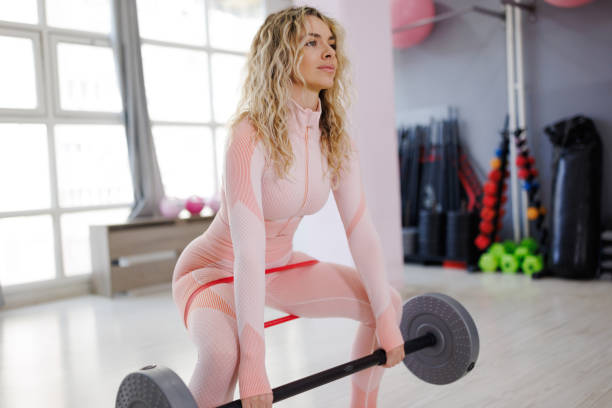If you’ve experienced the thrill and frustration of attempting the deadlift, you know it’s no walk in the park. The deadlift is a compound movement that engages multiple muscle groups, demanding both physical and mental fortitude.
Its complexity and difficulty can be intimidating, causing even seasoned lifters to second-guess their approach. But fear not, for with perseverance and dedication, the deadlift can become a badge of honor in your strength journey.
Nail the Proper Form
The deadlift is a compound movement that engages multiple muscle groups. Mastering the correct form is crucial for safety and effectiveness. Here’s a step-by-step guide to ensure you’re in the right position:
- Stand with your feet shoulder-width apart, toes slightly turned out.
- Bend at the hips and knees, maintaining a flat back and neutral spine.
- Grip the bar just outside your knees, keeping your hands shoulder-width apart.
- Brace your core, engage your lats, and lift the bar by driving through your heels and extending your hips and knees simultaneously.
- Lower the bar with control, maintaining a flat back throughout the movement.
Start with a Suitable Weight
When beginning or trying to improve your deadlift, start with a weight that allows you to focus on proper form and technique. Gradually increase the weight as you gain confidence and strength.
Activate Your Hips
The hip hinge is the foundation of a powerful deadlift. Focus on driving your hips forward as you lift, engaging the glutes and hamstrings for maximum power.
Engage Your Lats
Your lats play a vital role in stabilizing the bar and supporting your spine during the deadlift. Before lifting, actively engage your lats by imagining you’re trying to put your armpits in your back pockets.
Perfect Your Breathing
Proper breathing technique is essential for a strong deadlift. Take a deep breath before initiating the lift, hold your breath throughout the movement, and exhale forcefully once you’ve completed the lift.
Strengthen Your Grip
A strong grip is crucial for holding onto heavy weights during the deadlift. Incorporate grip-strengthening exercises, such as farmer’s walks and dead hangs, into your routine.
Train the Deadlift More Frequently
To improve your deadlift, consider increasing the frequency of your deadlift training. This doesn’t mean going heavy every time; mix in lighter variations and focus on perfecting your form.
Use Assistance Exercises
Supplement your deadlift training with assistance exercises that target specific weaknesses. Romanian deadlifts, deficit deadlifts, and glute bridges are excellent choices to enhance your deadlift performance.
Don’t Neglect Recovery
Deadlifts can be taxing on your central nervous system and muscles. Allow sufficient time for recovery between deadlift sessions to avoid overtraining and reduce the risk of injury.
Seek Feedback and Guidance
Consider seeking feedback from experienced lifters or a qualified coach in your gym. Most gyms like Anytime Fitness and YMCA have in-house trainers to help you. A fresh perspective can provide valuable insights and help you fine-tune your deadlift technique.
By perfecting your form, activating your hips, engaging your lats, and incorporating grip-strengthening exercises, you’re well on your way to improving your deadlift performance.
Train with proper breathing techniques, increase the frequency of your deadlift training, and utilize assistance exercises to address weak points. Always prioritize recovery and listen to your body to avoid overtraining.
Embrace the journey of continuous improvement, push your limits, and watch as your deadlift strength and confidence soar to unprecedented heights!
How to properly deadlift:
